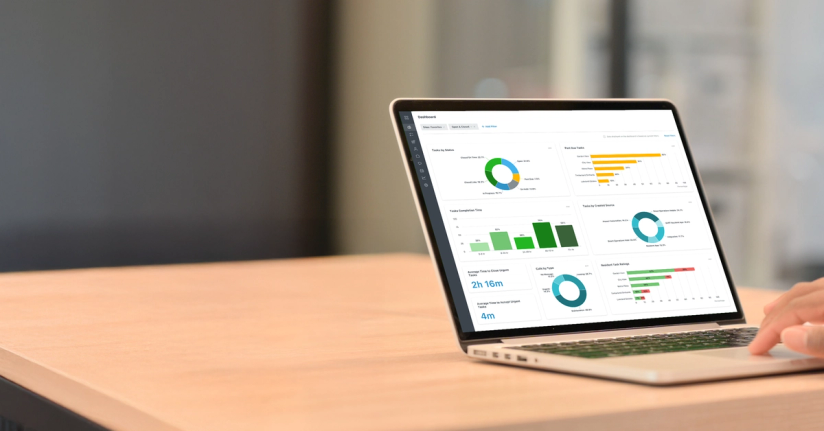Subscribe to our newsletter
In 2024, something remarkable happened: rental households accounted for the majority of new U.S. household growth. According to recent data, renters added 1.06 million households in the U.S. last year, significantly outpacing the 878,000 new homeowner households. For multifamily operators, this is more than just a data point—it’s a defining trend.
And it’s not a short-term swing. It’s the continuation of a 15-year shift toward renting as a long-term lifestyle choice. As this segment grows, so do expectations around the rental experience. Operators who lean into this transformation with smart, scalable solutions will be the ones who thrive.
Renter growth is being driven by real economic and lifestyle shifts
Several factors are converging to drive this renter surge. Rising interest rates and home prices have made ownership out of reach for many millennials and Gen Z renters, extending the duration of renting as a default.
At the same time, lifestyle preferences have shifted toward flexibility. Renting offers mobility, urban access and freedom from maintenance responsibilities. And as demand spreads into secondary and suburban markets, professionally managed communities are meeting renters where they are, often for the long term.
For operators, this means a growing base of residents who are more invested in their communities—but only if those communities evolve alongside them.

Today’s renters expect more than four walls and a fridge
This expanding renter base is not only growing in size, it’s changing in composition. Gen Z and millennials now dominate the rental market, bringing with them expectations shaped by digital-first experiences in retail, hospitality and even healthcare.
They expect fast, seamless leasing with tools like self-guided tours and on-demand viewings. They expect smart home technology that gives them control over locks, thermostats and lighting, and mobile-first communication with property teams.
Connectivity is no longer a perk; reliable WiFi is an essential utility. And with sustainability rising in importance, features like energy-efficient appliances and leak detection systems are increasingly viewed as table stakes.
They don’t just want convenience—they want autonomy, personalization and responsiveness. Operators who fall short risk higher turnover and negative reviews.
What this growth means for multifamily operators
More renters means more competition. And in a time where renters are comparing your community not just to other communities but to their favorite apps or subscription services, experience is everything.
Winning in this environment means more than adjusting pricing or layout. Residents are increasingly willing to pay a premium for tech-enabled convenience and service. Retention, not acquisition, becomes the more strategic focus. Delivering consistent, high-quality service reduces turnover and stabilizes revenue. And for operators scaling with a growing renter base, digital tools aren’t just helpful—they’re essential. Automating routine tasks, enabling transparency and enhancing service quality are how teams stay agile and effective.

How SmartRent helps you scale with the rental surge
At SmartRent, we build infrastructure for the future of multifamily.
Smart access and self-guided tours speed up the leasing cycle and reduce reliance on staff availability.
Smart home automation improves comfort and helps residents personalize their space—a key factor in satisfaction and retention.
Centralized management tools give teams better visibility and control, reducing costs and driving efficiency.
Leak detection and automation protect assets and reduce maintenance costs.
These tools aren’t just features; they’re strategic enablers that help properties keep pace with demand without sacrificing service quality.
When Trammell Crow Company adopted SmartRent’s Work Management platform, they saw measurable improvements across both the resident experience and operational performance, including:
An 8.5% increase in resident satisfaction
A 9.5% boost in maintenance responsiveness
An average NOI increase of more than $70,000 per property
Looking ahead: How to prepare for a renter-first future
This isn’t just a trend—it’s a transformation. The renter population is expected to keep growing, fueled by affordability challenges and shifting lifestyle priorities.
Operators should begin by auditing their current tech stack, identifying where disconnected systems are creating friction or redundancy. From there, investing in scalable, renter-first tools that enhance the entire resident journey—from leasing to living—can set the foundation for long-term success. Just as important: training on-site teams to see technology not as a replacement for service but as an accelerator of it.
Operators who delay modernization risk falling behind as renter expectations—and competitors—move forward.
Those who evolve today will be best positioned to lead tomorrow.

More renters, more opportunity
Renters are driving U.S. household growth. But with growth comes responsibility. To meet modern expectations, communities need to streamline operations and deliver experiences that drive loyalty.
With SmartRent, multifamily operators don’t have to choose between scale and service. Our platform empowers communities to thrive in a renter-first future.
Ready to scale your resident experience? Schedule a demo to learn more today.

